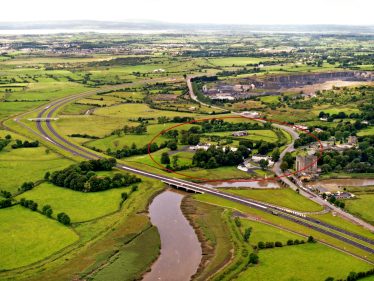The Norman Town of Bunratty

In 1248, the Norman Knight, Robert de Muscegros was granted Tradaree, an ancient Gaelic territory, by King Henry 111 of England, and this was the beginning of the Norman occupation of Bunratty, which was to last seventy years.
The First Fortification
De Muscegros fortified his stronghold at Bunratty, having been given two hundred oak trees from the woods of Cratloe to build a motte and bailey. In 1253 we see the beginning of the Borough of Bunratty with the granting of a licence to have a vill with a weekly market and a yearly fair. The ‘Vill’ was an administrative unit which in this case signified the start of a town attached to the central Norman stronghold, which in turn, controlled the rural parts of the borough.
Consolidation
The weekly market was held on Thursdays and the annual fair took place at the end of August and lasted five days. In 1277, the De Muscegros family surrendered the manor back to the king as the Gaelic clans were proving to be too troublesome and the manor was handed over to Thomas De Clare who immediately build a stone castle and replaced the native clans who occupied the rich pasture lands with Norman settlers. The manor would have been split between the demesne of De Clare himself and the Norman tenants.
There would have been six classes of tenants: Free Tenants, Farmers, Gavillors, Cotiers, Burgesses and Betaghs. Those of the Betagh class were invariably the native-Irish, probably the dependents of the displaced Gaelic chieftains. These would have become un-free tenants in the Norman system and continued to fulfill the same role as they did in the Gaelic system. And so Bunratty became the centre of administration for a large and lucrative agricultural territory. The Norman manor was structured in an organised fashion with a castle and a church in close proximity, along with a mill and a forge.
A Centre of Population
At Bunratty there was much more. Around the castle there was a town of up to one thousand inhabitants. In an inquisition in 1287, there is mention of the town having 226 burgages, (sections of property which Burgesses rented), with the occupants of these properties paying rent of £13and 6 s per year. The town had a water mill, fish pools and a commercial rabbit warren. Rabbits were introduced by the Normans and were an important commodity, providing meat and skins. We read that the custom or income from the shambles was 3 shillings and the custom of the annual fair was a half mark. The ‘Shambles’ was a slaughter house and butcher shop.
Trade and Commerce
A major feature of the town was the harbour, eloquently described in ‘Caithreim Thoirdealbhaigh’ as ‘ Bunratty of the wide roads, oared galleys and safe harbour’. The wide roads referred to was the River Shannon. The harbour was used for trade and commerce, and in controlling the river. Various historians have speculated as to the exact location of the castle and the town; no remains are visible today. It is likely that the Norman stone castle was adjacent to the later Gaelic castle and the town was on the adjoining elevated land.
A Turbulent Existence
The Norman town was under almost constant harassment from the Gaelic clans, particularly the Mac Namaras and O’Briens. There were sieges in 1285, 1298 and 1299. The demise of the De Clares at Bunratty was brought about by their defeat at the Battle of Dysert O Dea in 1318. After receiving news of the defeat and the death of her husband, Lady De Clare set fire to the castle and the town, and departed.
Three years later an inquisition account, paints a vivid picture
The remaining houses below the precinct of the castle are dilapidated and in ruins and cannot be reckoned as dwellings….the lands of the lordship are waste and out of cultivation for the past three years; neither are there any free tenants or other dwellings in Thomond….with the exception of a few dwellers in the town who are beginning to rebuild in the same town which was burnt and destroyed in the day when Lord Richard de Clare was slain.




No Comments
Add a comment about this page